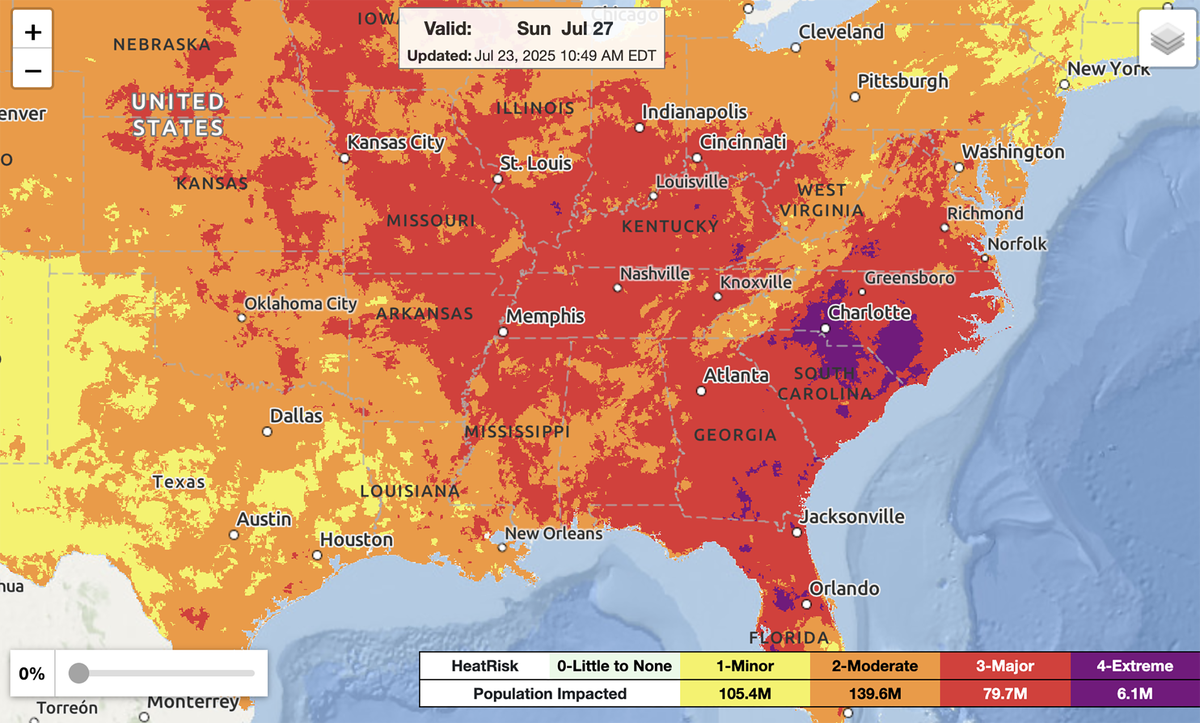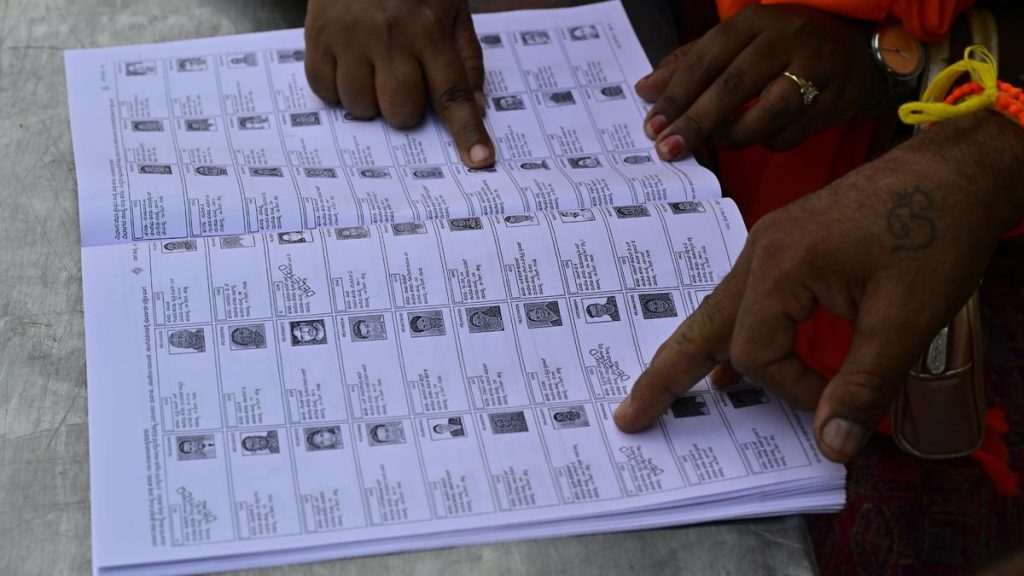Now Reading: Heat Dome Sparks Extreme Weather Alerts Across Eastern U.S
-
01
Heat Dome Sparks Extreme Weather Alerts Across Eastern U.S
Heat Dome Sparks Extreme Weather Alerts Across Eastern U.S

fast Summary
- Tens of millions in the eastern U.S. will endure extreme heat alerts under a persistent heat dome lasting at least a week, according to meteorologists.
- On July 23, over 35 million people are at major or extreme risk of heat effects, concentrated along the mississippi River Valley; this number is projected to double by July 24 and reach nearly 90 million by July 25.
- The Southeast and eastern Seaboard are expected to experience severe conditions later this week with record-high overnight temperatures due to high humidity.
- The phenomenon is driven by trapped hot air from a high-pressure system combined with jet stream movement. Heat domes form slowly and dissipate gradually, intensifying discomfort for extended periods.
- States like Tennessee (centered around Memphis) face grueling heat today, while worse conditions will unfold progressively across areas like the Ohio River Valley on July 24 and the Eastern Seaboard on July 25.
- Climate change has intensified prolonged summer heat patterns called “heat streaks,” which involve three or more consecutive days of exceptionally high local maximum temperatures.
Read More: Heat Domes: Extreme heat And Humidity Triggers Alerts Across Eastern U.S.
Image:
!Heat Risk Map of Eastern US
Indian Opinion Analysis
Prolonged extreme heat waves in parts of the United States reflect broader climatic trends that hold global meaning, including for India-a similarly vulnerable nation facing growing challenges related to climate change-induced weather phenomena. India’s population density coupled with humidity amplifies risks akin to those caused by rising overnight temperatures seen in America’s current heat dome scenario.
India’s urban centers frequently endure extended periods of sweltering temperatures during peak summers due to similar interactions between high-pressure systems and local air circulation dynamics. notably, agricultural regions such as India’s Indo-gangetic plains could face amplified risks if phenomena analogous to america’s “corn sweat” were exacerbated locally during critical cropping seasons.
While India’s climatic impacts differ geographically from those in the U.S., heightened awareness and science-led preparedness measures-akin to advice provided in affected American regions-could strengthen resilience against future weather extremes linked directly or indirectly through global warming trends.

























